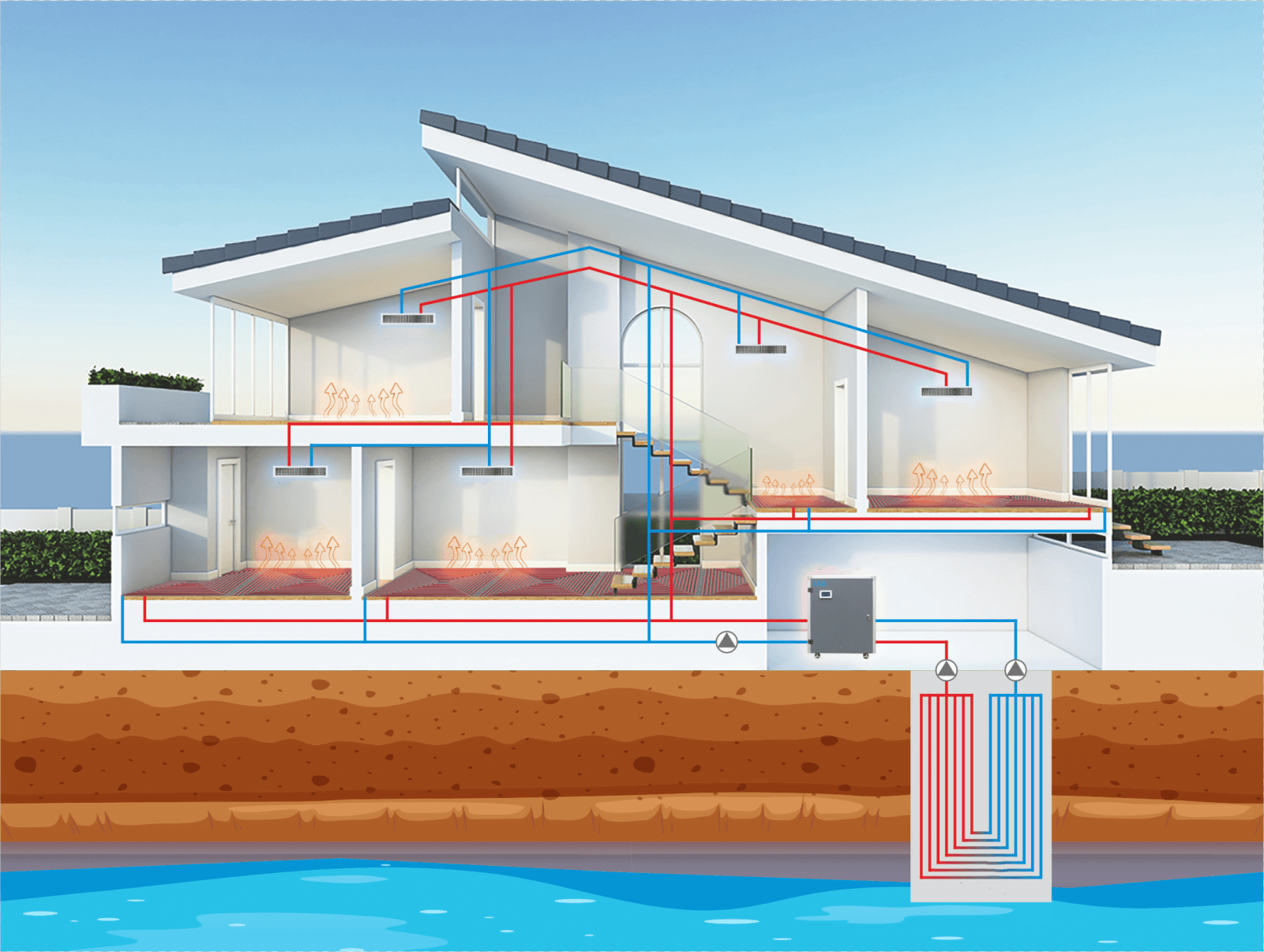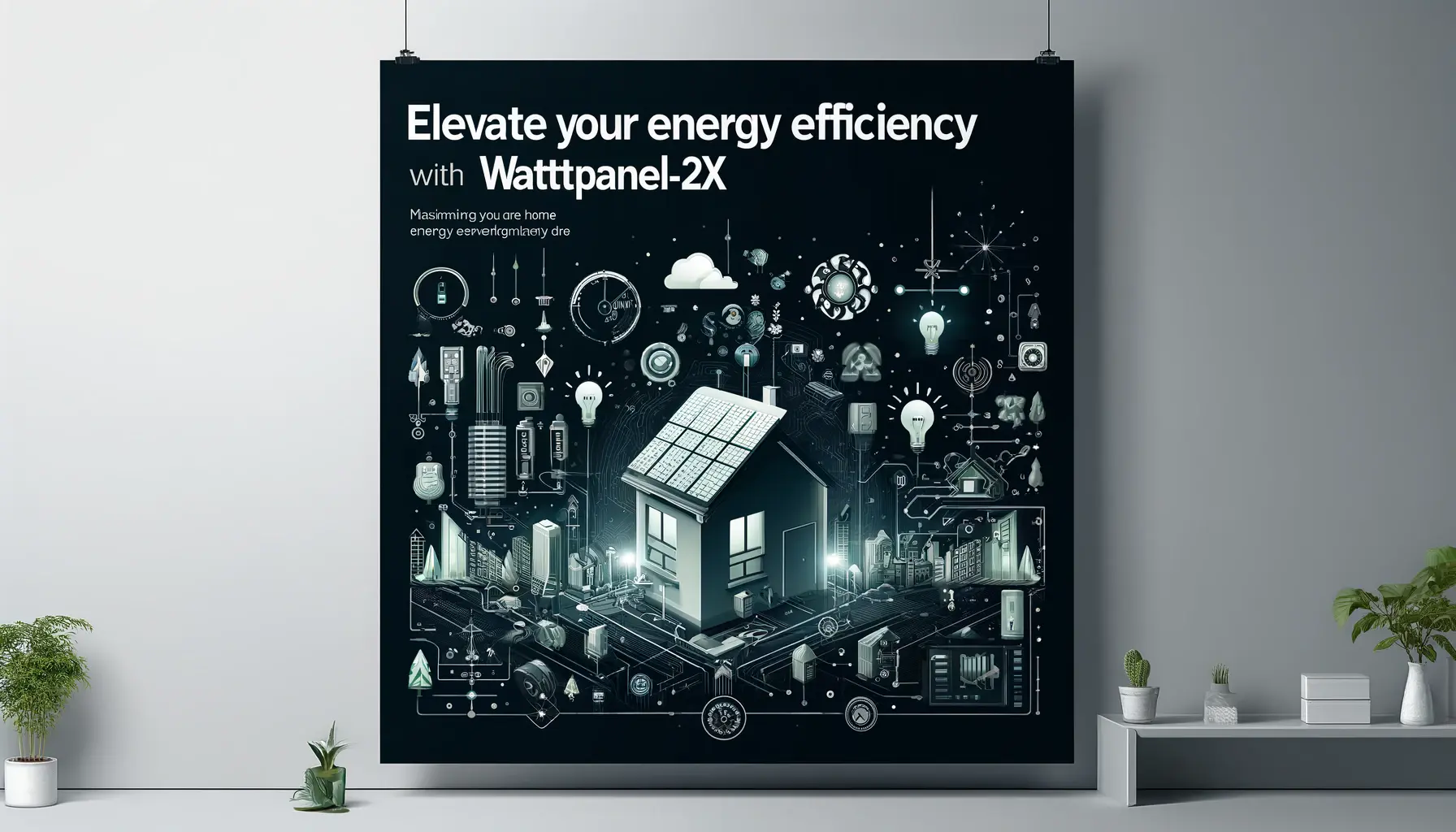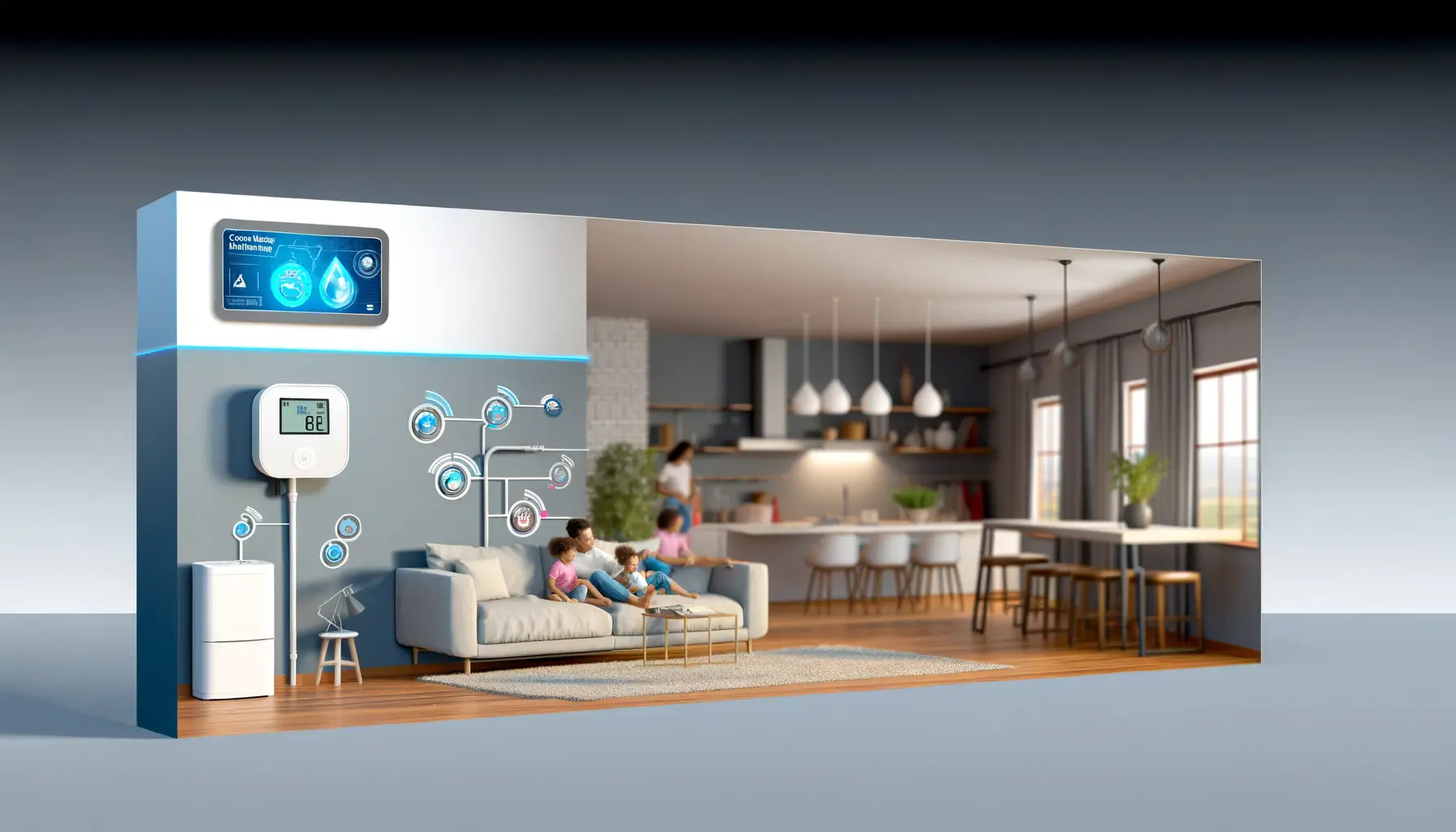
In today’s home environment, proper temperature control is not only related to the comfort of living but also directly affects energy consumption and economic benefits. From underfloor heating to central air conditioning, different types of thermostats play a core role, helping us maintain a constant and comfortable indoor temperature through the changing seasons. With the development of technology, various types of thermostats have appeared on the market, each with its unique functions and applicable scenarios. This article will introduce seven common types of home thermostats through detailed tables and analysis, helping you understand the characteristics and applications of each type of thermostat to make more appropriate choices.
家用恒温器概述
To more visually present the basic information and main functions of different thermostats, we first compare these seven common types of home thermostats through a table.
表1:7种温控器类型及功能比较
| 恒温器类型 | 主要特点 | 推荐环境 |
|---|---|---|
| 地暖温控器 | 控制地板采暖系统,提供均匀的室内温度。 | 住宅、办公室,特别是寒冷地区。 |
| 热泵恒温器 | 控制热泵的加热和冷却,高效利用能源。 | 季节变化明显的地区。 |
| 电加热温控器 | 管理电加热器或电地暖的温度。 | 任何需要快速加热的小空间。 |
| 中央空调温控器 | 调节整个建筑物的供暖和制冷系统。 | 大型住宅或商业建筑。 |
| 热水器温控器 | 控制水加热设备,确保水温恒定。 | 家庭、酒店或其他需要大量热水的地方。 |
| 太阳能热水器温控器 | 管理太阳能热水系统,优化能量吸收和转换效率。 | 注重环保、阳光充足的地区。 |
| 新鲜空气恒温器 | 控制新风系统,调节进入室内的空气的温度和质量。 | 高密度居住区、需要持续供应新鲜空气的环境。 |
Through this table, we can preliminarily understand the main functions and applicable environments of each thermostat. Next, we will detail the specific characteristics and applications of each type of thermostat.
7种温控器详细介绍
1. 地暖温控器

简介及功能:
The underfloor heating thermostat is designed to control floor heating systems. It monitors indoor temperatures through temperature sensors and adjusts the output of underfloor heating to ensure the floor temperature is even and meets the set comfort level. The heat provided by the underfloor system radiates evenly from the ground up, increasing thermal efficiency and reducing air dust movement, which is a significant advantage for people sensitive to respiratory systems.
典型用法:
In residential and commercial properties, underfloor heating thermostats are commonly used in main living areas such as living rooms, bedrooms, and bathrooms, providing continuous and comfortable heat. Users can set daily or weekly heating schedules based on their living habits to maximize energy efficiency.
The following sections will continue to detail the remaining six common types of home thermostats, their functions, typical usage, and characteristics.
2.热泵温控器
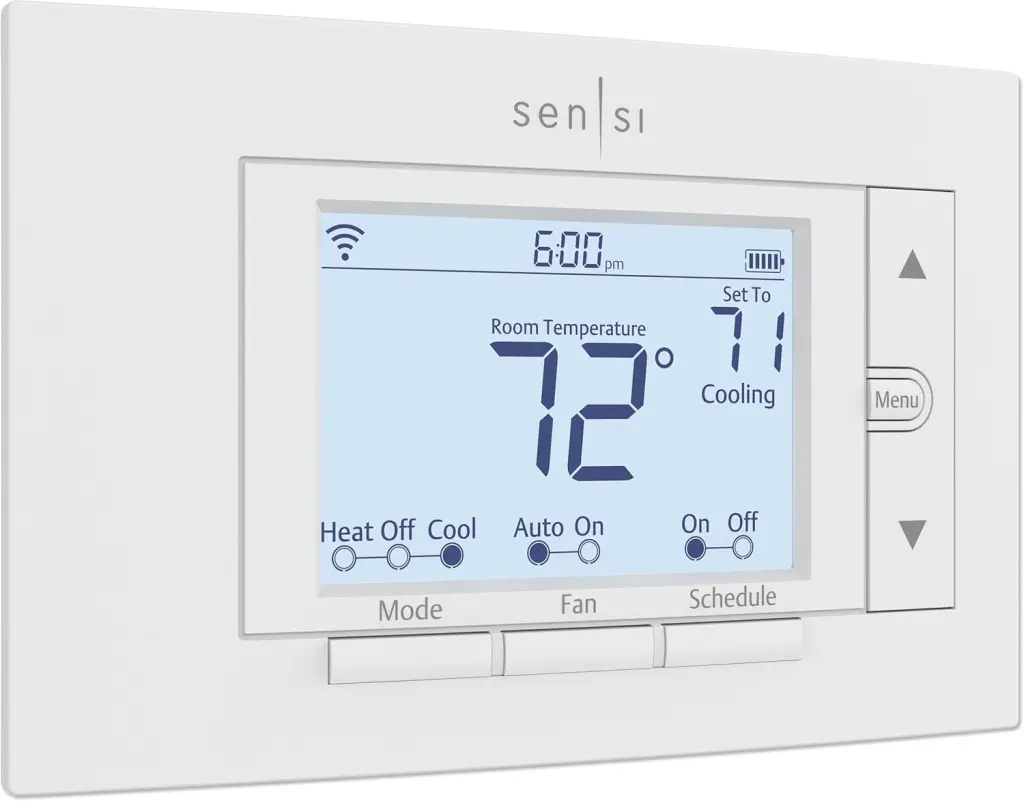
简介及功能:
The heat pump thermostat controls heat pump systems, which can provide both heating and cooling functions, making it very suitable for areas with significant temperature changes throughout the year. The heat pump thermostat can optimize the operation of the heat pump, improving energy efficiency and reducing energy consumption.
典型用法:
Heat pump thermostats are typically installed in residential or commercial buildings that require year-round temperature regulation. Users can set temperature thresholds to ensure indoor temperatures remain comfortable regardless of external temperature changes.
3.电加热温控器
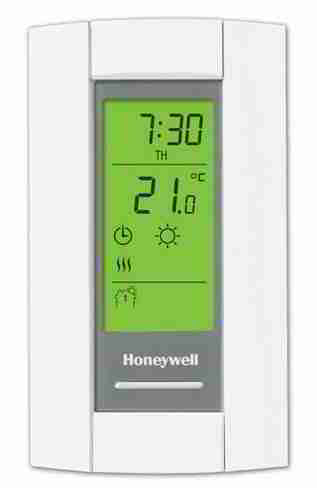
简介及功能:
The electric heating thermostat controls electric heating equipment, such as electric radiators or electric heated floors. This type of thermostat can precisely regulate the output of electric heating devices to maintain a stable indoor temperature.
典型用法:
In homes or offices, electric heating thermostats are suitable for quickly heating small spaces. Users can adjust the temperature as needed or set timers to automatically turn heating on or off at specific times.
4.中央空调温控器

简介及功能:
The central air conditioning thermostat manages the central air conditioning system, controlling the heating and cooling of an entire building or house. This thermostat can achieve complex multi-zone temperature control, improving overall energy efficiency.
典型用法:
Central air conditioning thermostats are usually installed in large residential or commercial buildings, setting different temperatures for different areas or floors to achieve precise temperature control.
5.热水器温控器

简介及功能:
The water heater thermostat controls the operation of water heaters to ensure constant water temperature and avoid energy waste. This thermostat can precisely adjust the temperature of the water heater, suitable for homes, hotels, or other places that require a large amount of hot water.
典型用法:
Users can set the water temperature according to personal preferences and needs. Water heater thermostats can also set specific heating schedules to save energy and provide hot water when needed.
6.太阳能热水器温控器

简介及功能:
The solar water heater thermostat manages the temperature exchange between solar collectors and storage tanks. It optimizes the absorption and conversion of energy, ensuring system efficiency is maximized while preventing overheating.
典型用法:
In sun-rich areas, solar water heater thermostats can automatically adjust hot water production based on solar radiation intensity, ensuring a continuous supply of efficient and environmentally friendly hot water.
7. 新鲜空气恒温器
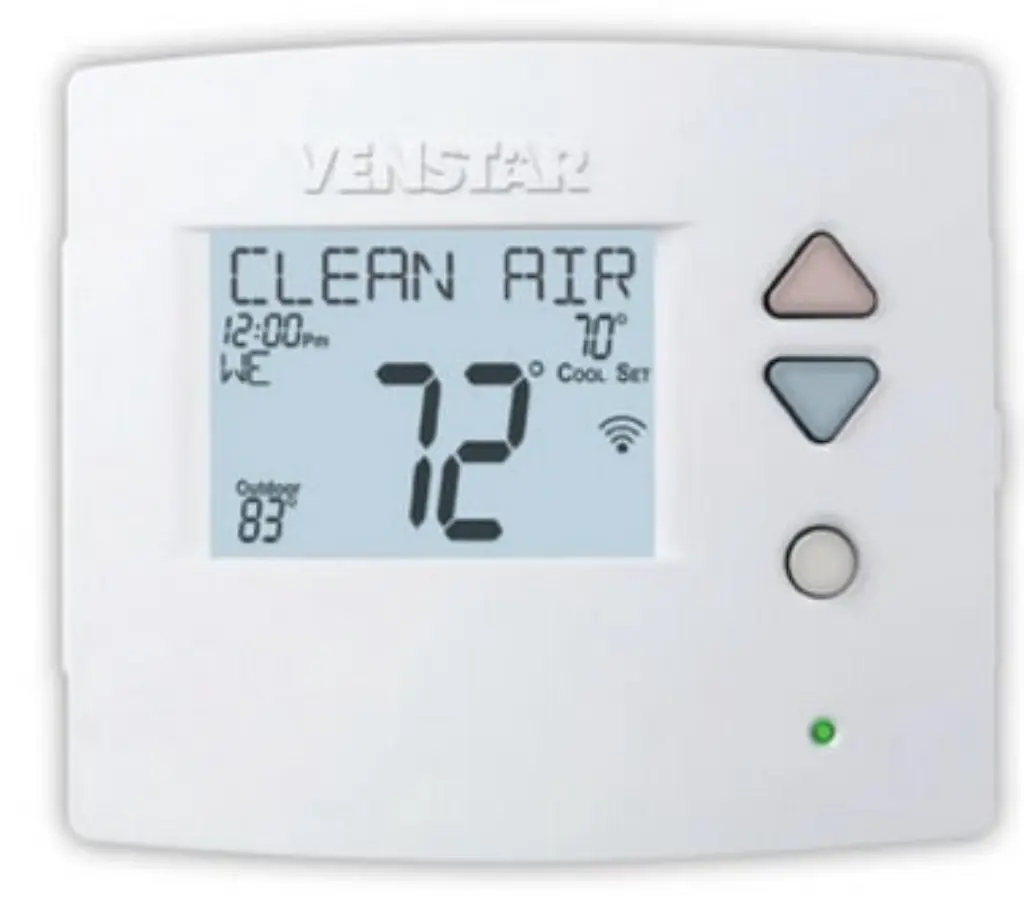
简介及功能:
The fresh air thermostat controls the operation of fresh air systems, which are responsible for introducing processed fresh air indoors. It can adjust the temperature of the incoming air, improving air quality and providing a healthy, comfortable environment for living spaces.
典型用法:
Fresh air thermostats are particularly important in high-density residential areas or industrial environments. They can automatically adjust the intake based on the temperature difference between the outside and inside, ensuring indoor air is fresh and at a suitable temperature.
This detailed introduction provides specific information and usage guidelines for various thermostats, helping users choose the most suitable thermostat based on their actual needs and living environments. The following sections will involve more discussions on international specifications and standards, ensuring global users can safely and effectively use these devices.
接线方法和控制策略
Next, we will detail the wiring methods and control strategies of various thermostats through another table, ensuring you can choose the most suitable configuration based on your home’s specific needs.
表2:7种温控器接线方式及控制策略
In this section, we will detail the wiring methods and control strategies of various thermostats through a table, which is crucial for ensuring correct installation and optimal performance of the devices.
| 恒温器类型 | 接线方法 | 控制策略 |
|---|---|---|
| 地暖温控器 | Usually includes power, ground, and control wires, connected to the underfloor heating system’s power and control ends. | 温差控制、PID控制、可编程和智能学习功能。 |
| 热泵恒温器 | Needs to be connected to the heat pump’s power and control ends, may require a multi-wire system to support heating and cooling functions. | 温差控制、时间表控制、智能调节。 |
| 电加热温控器 | 简单的两线或三线系统,直接控制电加热元件。 | 温差控制,定时器控制,部分型号支持远程控制。 |
| 中央空调温控器 | 复杂的多线系统,需要连接到中央空调系统的各个部分。 | 分区控制、温湿度联控、智能化、远程控制。 |
| 热水器温控器 | 至少两线接线,控制加热器的电源开关。 | 温差控制、效率优化控制。 |
| 太阳能热水器温控器 | Includes temperature sensor wires, power wires, and control wires, to optimize solar energy collection and use. | 温度优先控制、效率监控、自动调节。 |
| 新鲜空气恒温器 | 通常需要连接室内外温度传感器和新风机组。 | Automatic adjustment based on indoor and outdoor temperature difference, timer control, air quality feedback control. |
Through this table, we can see the differences in wiring methods and control strategies among different types of thermostats, which directly affect the installation process and daily operation efficiency of the devices.
国际规范和标准
For thermostats used across countries and sold in international markets, understanding and complying with the electrical specifications and safety standards of different countries and regions is extremely important. Here is a table summarizing some of the main market specifications and wiring standards.
表3:不同国家和地区的规格及接线标准
| 国家/地区 | 电压和频率要求 | 法规和认证 | 特殊接线要求 |
|---|---|---|---|
| USA | 120伏/60赫兹 | UL认证、NEC电气规范 | 接地和保护措施的严格要求 |
| EU | 220-240伏/50赫兹 | CE 标志、RoHS 合规性 | Must comply with the EU’s Low Voltage Directive and Electromagnetic Compatibility Directive |
| 中国 | 220伏/50赫兹 | CCC认证 | 必须适应高人口密度和高使用频率的要求 |
| 日本 | 100V/50Hz或60Hz | PSE认证 | 具体的抗震防火标准 |
| 澳大利亚 | 230伏/50赫兹 | SAA认证 | 安装必须考虑室外气候影响,例如防水和防紫外线 |
This table shows some of the key electrical and safety standards to consider when operating in the global market, helping manufacturers and users ensure product compatibility and safety.
智能控制模式:现代恒温器的创新
As technology continues to advance, the widespread adoption of smart home systems has greatly changed our way of managing home appliances, and thermostats are no exception. Smart control modes make thermostats not just simple temperature adjustment devices but a system that can increase energy efficiency, enhance comfort, and simplify daily life. This section will explore the control methods of smart thermostats and their benefits.
智能恒温器的基本功能
The main difference between smart thermostats and traditional thermostats is their connectivity and automation features. These thermostats are usually connected to the home network through Wi-Fi or other wireless technologies (such as Zigbee or Z-Wave), allowing users to remotely control the home temperature via smartphone apps, tablets, or voice assistants (like Amazon Alexa, Google Assistant, or Apple HomeKit).
主要智能控制功能
- 遥控: Users can view and adjust the home temperature settings from anywhere via an app, whether at the office or on vacation.
- 自动调度: Smart thermostats can automatically set temperature schedules based on users’ daily activity patterns. For example, it can start heating the home automatically before you usually get up, ensuring the room is warm and comfortable when you wake up.
- 能源效率分析: Many smart thermostats provide detailed energy consumption reports and analyses, helping users understand how their heating and cooling habits affect energy consumption and how to adjust settings to reduce energy costs.
- 地理围栏: Using the location of users’ smartphones, smart thermostats can know when users leave home or are on their way home. The system adjusts the temperature accordingly to optimize energy efficiency and provide a comfortable environment when users arrive.
- 语音控制: Once integrated with smart home assistants, users can simply use voice commands to adjust temperature settings, greatly increasing convenience and accessibility.
- 学习偏好: Some high-end smart thermostats, like the Nest Learning Thermostat, have the ability to learn users’ preferences and can automatically establish a suitable temperature schedule for the home within a few days without much user intervention.
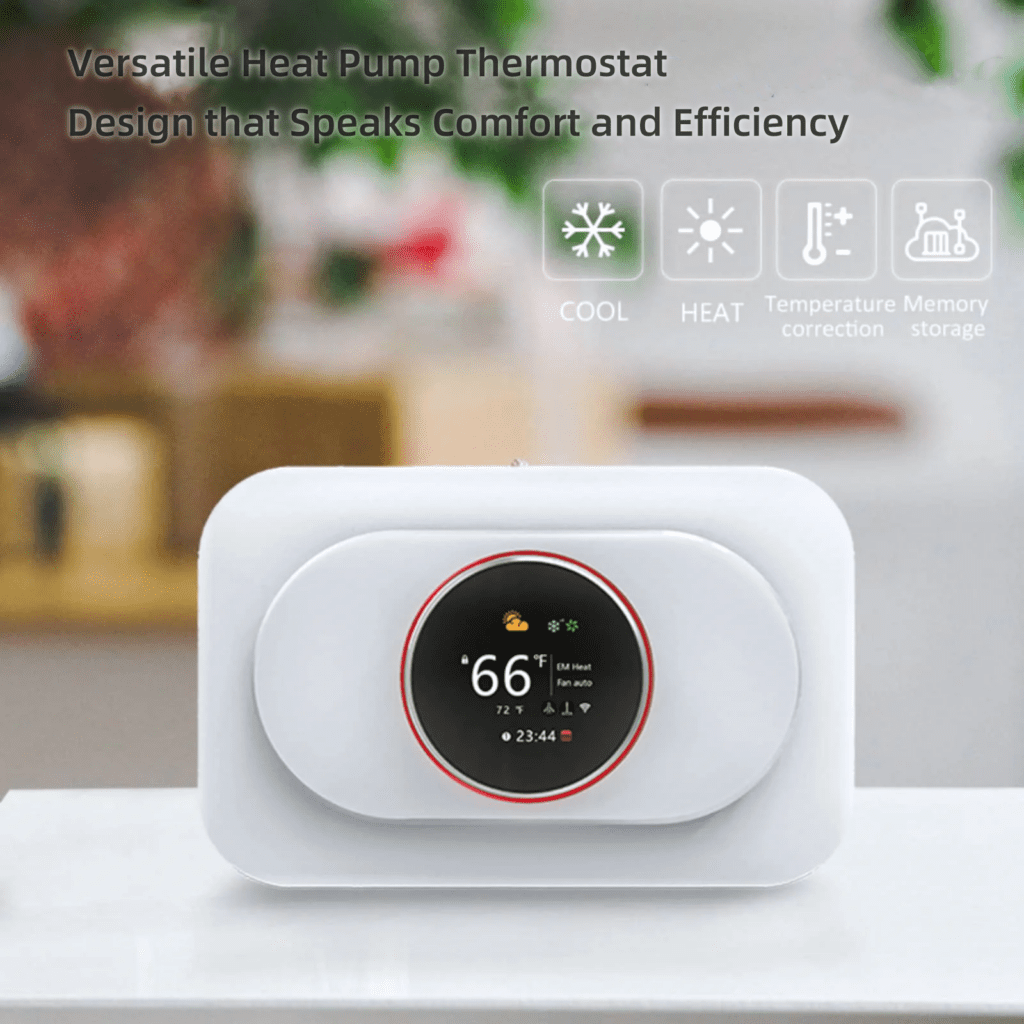
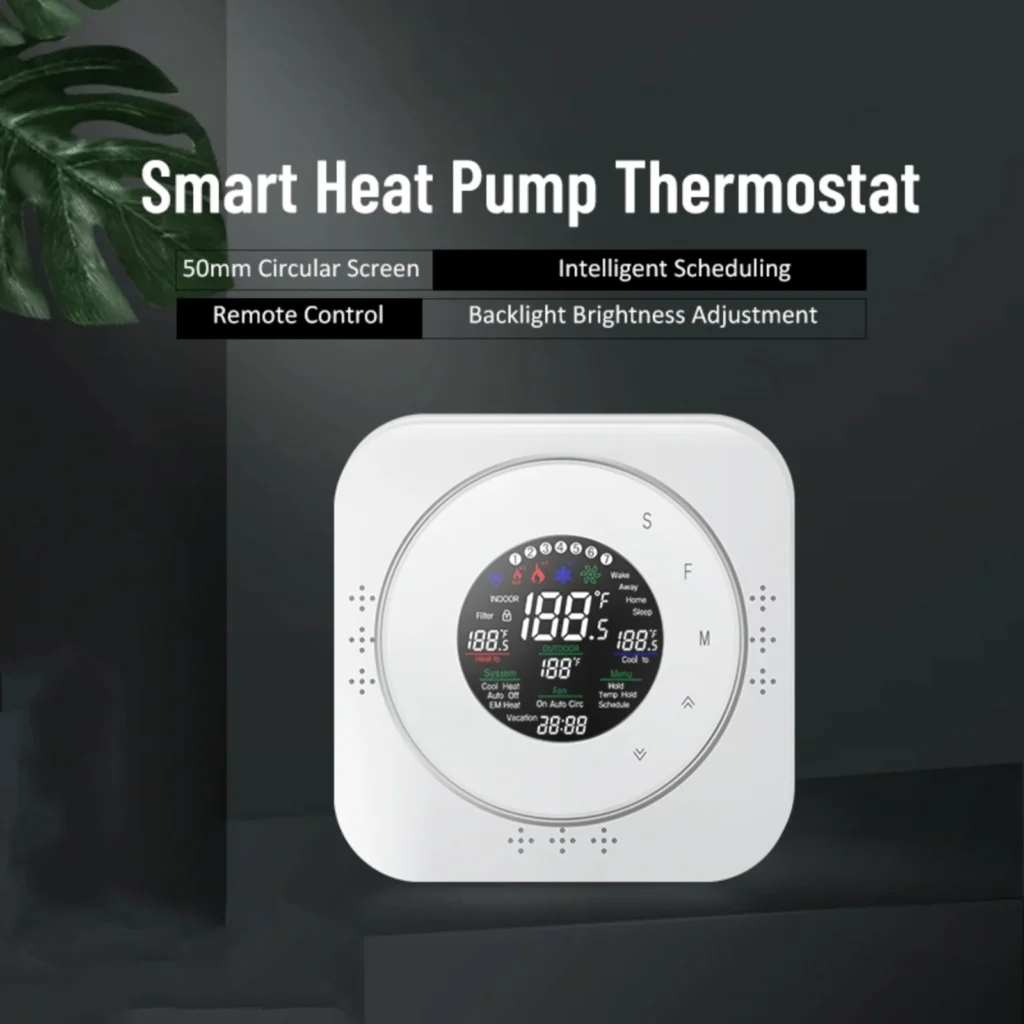

智能恒温器的实际应用
Considering the potential of smart thermostats to improve energy efficiency and user comfort, many modern homes and offices have begun deploying these devices. For example, a family might use a smart underfloor heating thermostat to preheat rooms in winter, while optimizing cooling efficiency with a central air conditioning thermostat in summer.
The integration and application of smart thermostats not only enhance the comfort of living and working environments but also help achieve a more sustainable lifestyle by precisely controlling and intelligently adjusting to reduce energy waste. As technology continues to advance and user awareness increases, it is expected that smart thermostats will become an important component of home automation in the future.
智能温控器的节能效果及指标数据
Smart thermostats not only improve the comfort and convenience of homes, but they also play a crucial role in energy saving and reducing environmental impact. Through smart features, these devices can optimize the timing of heating and cooling, reducing unnecessary energy consumption, thereby bringing significant energy-saving effects to users. This section will explore the energy-saving effects of smart thermostats and provide some specific energy-saving data.
节能功能
- 自动调整: Smart thermostats can automatically adjust settings based on outdoor temperatures and indoor activity patterns, avoiding excessive heating or cooling, which directly reduces energy waste.
- 高效调度: By learning users’ living habits, smart thermostats can automatically create efficient heating and cooling schedules. For example, they automatically reduce the operation of heating or air conditioning during times when users are typically not at home.
- 细节优化: Smart thermostats can also achieve energy savings by making small adjustments to temperature settings (such as lowering by 1-2°F/about 0.5-1°C), and these small changes usually do not affect the comfort of the occupants.
节能指标
The energy-saving effects of smart thermostats can be more clearly demonstrated through the following data:
- 降低能源消耗:据估计,智能恒温器可以减少家庭能源消耗约 10% 至 12%。
- 每年节省: On average, homes can save about 10% to 23% on heating costs and 15% on air conditioning costs per year by using smart thermostats.
- 长期投资回报: Although the initial investment for smart thermostats is relatively high, according to data from the U.S. Environmental Protection Agency (EPA), the average family can recoup this cost through energy savings within two years.
These data show that although smart thermostats cost more than traditional thermostats, they can achieve cost-effectiveness in the long run by significantly reducing energy costs. More importantly, this type of thermostat helps households manage and use energy more effectively through automation and intelligence features.
概括
智能恒温器不仅提高了我们生活的便利性和舒适性,
but their energy-saving features also help promote homes towards a greener, more sustainable direction. As technology continues to advance, the market for smart thermostats is expected to expand further, and their energy-saving technologies will continue to improve, contributing more to the global improvement in energy efficiency.
Choosing and installing the right thermostat is crucial for enhancing the comfort and energy efficiency of home and office environments. Through the introduction and analysis in this article, we hope readers can better understand the functions, applicable scenarios, wiring methods, and international specification differences of various thermostats, thereby choosing the most suitable thermostat for their needs. In today’s increasingly globalized world, the correct selection and use of these devices not only enhance the energy efficiency of individuals and businesses but also ensure compliance with regulations and standards in different regions, achieving safe, efficient environmental control.
